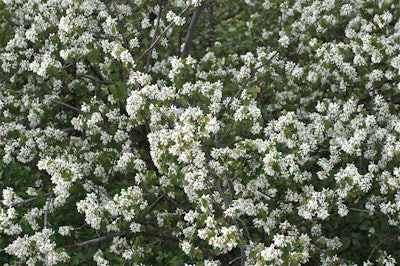
Incorporating native plants in landscape designs has become a hallmark of sustainable landscaping. It can also prove to be a very effective way to build stronger relationships with your residential clients while keeping competitors at bay. The key is developing the knowledge and skills necessary to become an "expert" on using native plants—something most landscape contractors still lack.
"When I speak to landscape professionals, I often hear stories about how their clients asked them about the types of native trees and plants they could use in their landscapes," says Kim Eierman, an environmental horticulturist specializing in ecological landscapes and native plants. "Many times, the contractor does not know how to respond."
As demand for ecological landscaping and the use of native plants continues to grow, professional landscape contractors should become well-versed in this area. Eierman says contractors can take a few simple steps to begin developing the necessary expertise.
What is "native" and why does it matter?
"First of all, you have to ask yourself what your definition of 'native' is because it can mean a lot of things to a lot of people," Eierman points out. In the strictest sense, "native" refers to trees and plants that existed all the way back to pre-Colonial times and within 100 miles of the current area to be planted. A broader interpretation would be to simply focus on a specific region, such as the Northeast or, more narrowly, Vermont. "From an ecological perspective, the tighter we get, the better," Eierman says.
The point is that you are utilizing trees and plants that can naturally thrive in the environment you are placing them in. For example, "Buying red maples that were grown in Southeastern clay and then trying to plant them in thin, shallow soil in the Northeast could result in complete failure," Eierman points out. "Locally grown is your friend in terms of survivability and overall success—especially if your client wants a warranty on your plantings."
Helping clients make the connection
It's not just about protecting yourself by choosing trees that have a better chance of survival, though. Effective use of native trees can help bring a client's landscape to life, literally—helping clients make more of an emotional connection to their landscape. This can help set you apart from the "cookie cutter" landscape designers in your market while also helping you to build more lasting, meaningful relationships with your clients.
Think about what a residential landscape really is. "When people buy a house and yard, they are also buying their own little ecosystem," Eierman says. "Usually, it's in pretty poor ecological shape. Rarely do these yards look anything like natural areas. But one thing we've found is that diverse, native landscapes are healthier with less disease and pest pressure—and are also more resilient to the effects of climate change."
With respect to ecological landscaping, science matters. "It's evolution," Eierman says. "Native creatures have evolved with native plants. For example, Amelanchiers—commonly known as Juneberries—are small native trees acting as larval hosts for several butterfly species. Butterfly caterpillars don't eat nectar, they eat the leaves of plants they have evolved with. And Juneberry trees also provide nectar for many species of bees. These trees bloom in late April, so the flowers are an early source of nectar for early-emerging bees. The flowers are then followed by berries in June, which serve as a food source for fruit-eating birds." All the while, leaves on these trees are attracting caterpillars, which soon morph into butterflies.
Why does this matter to a landscape contractor? "What client doesn't want to see butterflies and songbirds in their landscape?" Eierman asks. "Many people are also becoming more aware of the fact that most bees, like bumble bees, are really quite docile and beautiful. Now, you don't want to mess with a yellow jacket, but most bees are not problematic. You can educate clients on things like this to help them better connect with nature, while also differentiating yourself in a significant way."
Information like this makes for great material for any blogs, newsletters or social media postings you do. You could also conduct an educational class in early spring.
"Edible native landscapes are simply a great way to bring families together and get them interested and involved," Eierman says. "You can teach them that those Juneberries on their trees are not only tasty, but also nutritious, containing a high level of antioxidants. Similarly, nut trees like black walnut, shagbark hickory and butternut produce nuts that are edible for humans."
4 ways to start building your knowledge base
Make no mistake, there is a real science to ecological landscaping. But that doesn't mean you need to earn a Ph.D. before you can begin selling and implementing it with confidence. Eierman recommends four simple ways to begin building your knowledge base.
1. The Lady Bird Johnson Wildflower Center in Austin, TX, offers an online native plant database. "You can search by plant type and even specify by state, size, moisture levels, sun conditions and other criteria," Eierman points out.
2. Native plant societies exist in virtually every state. "Membership is usually quite inexpensive, no more than about $50 a year," Eierman says. "You can obtain lists of native plants in your area, and also gain access to experts who can give you lots of good advice."
3. Go to some native plant sales. Just do a Google search for "native plant sale YOUR STATE" to see what's taking place in your area. "This is a great opportunity to look around and see what's available in your area, and learn what some different plants look like," Eierman says. "You don't necessarily do any buying for clients at these events, because you'll want to do that at a wholesale nursery, but you can learn a lot. These sales are also typically held in early spring when you might have a little more free time on your hands."
4. Check out some area botanical gardens, many of which include designated areas for native plants. Go there to see what plants look like and how they're placed, and read plant labels.
As more consumers are requesting that native trees and plants be incorporated into their landscapes, now is the time for landscape contractors to take action. "I refer to this as 'finding the beauty in ecological function,'" Eierman says. "It's about understanding what trees and plants do. They are not statues. They are actually performing functions in nature. Those that are native to your area are going to do a lot more ecologically than something that has been brought over from Japan, China or Europe.
"Train your clients to really see what is going on in their landscape," Eierman continues. "Help them see the beauty in birds, butterflies and other beneficial insects. Most will greatly appreciate that. But you have to help get them focused on it. If you do, you'll likely have something to sell them that your competitors will not."
Kim Eierman is a Certified Horticulturist specializing in ecological landscapes and native plants. She's also a Master Gardener, Master Naturalist and an Accredited Organic Landcare Professional. Kim teaches at the New York Botanical Garden, Brooklyn Botanic Garden, The Native Plant Center in New York, Rutgers Home Gardeners School and several other institutions. Her company, EcoBeneficial!, is dedicated to improving our environment by promoting ecological landscaping and the use of native plants. Visit ecobeneficial.com for more information.
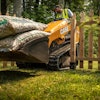
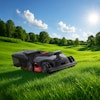


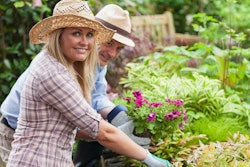
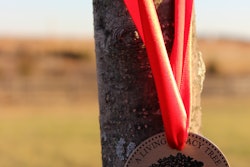
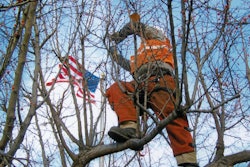







![Gravely Pro Turn Mach One My23 Dsc03139 Edit 1200x800 5b2df79[1]](https://img.greenindustrypros.com/mindful/acbm/workspaces/default/uploads/2025/10/gravely-pro-turn-mach-one-my23-dsc03139-edit-1200x800-5b2df791.BucBnDoN22.jpg?ar=16%3A9&auto=format%2Ccompress&fit=crop&h=135&q=70&w=240)





